March 2016 - U.S. Navy Corpsman perform advanced medical procedures in various locations on many different platforms. Whether they are on a submarine or in the back of a military vehicle, they act as first-line medical providers for U.S. service members, coalition and enemy forces, and civilians. The Navy practice of medicine is not exclusive – Corpsman often provide medical care for wounded Marines and their units.
The U.S. Army has the 68W (Healthcare Specialist) and the U.S. Air Force has the 4N0X1 as their respective services “Medics.” It is a condition of employment for both the 68W and the 4N0X1 to maintain certification from the National Registry of Emergency Medical Technicians (NREMT) to stay in the military as a Medic. The use of the National Registry is to verify cognitive and psychomotor competencies at a national level. The Navy Corpsman (HM) does not have this requirement, which has left a large number of Corpsman without the ability to gain civilian employment upon leaving military service.
Many agencies have collaborated with the military services to see what can be done to assist Sailors as they transition out of the military and into the civilian workforce. The U.S. Department of Labor expects Emergency Medical Services (EMS) jobs to rise faster than most career fields, and U.S. Bureau of Labor Statistics report a 7.2 percent unemployment rate for veterans. This could be a marriage in professionalism that is a win-win situation.
The National Association of Emergency Medical Technicians (NAEMT) has lobbied on behalf of transition programs for military medics in Washington D.C. The Department of Transportation, along with the National Association of State Emergency Medical Offices (NASEMSO) and the National Association of EMS Educators (NASEME) have performed countless hours of gap analysis and research to help the civilian side understand what it is that Corpsman do. The National Registry has worked directly with the U.S. Navy in order to allow Corpsman to challenge the national exam at the EMT level and in some cases an Advanced EMT certification.
Currently, Corpsman graduate from an approved EMT course while attending their “A” school, or initial job-specific training in Joint Base San Antonio, Texas. This meets the entry requirement for national certification, but the Navy does not require Sailors to test at that time. Historically, Navy Corpsman had problems paying for their certifications, but a new program may change that issue. The Navy COOL, or Credentialing Opportunities On-Line, offers a funding stream for active and reserve (less IRR) service members to gain their National Registry certification without cost.
The first step in challenging the National Registry exams will be to contact the National Registry to verify eligibility. Eligibility will consist of a current training record, a certification on completion of “A” school EMT course, or a DD214. The next step will be to complete an EMT refresher course. This course is generally a 24-hour course, with exceptions made for states that offer the National Registry's new recertification platform. In that case you can complete the national component of 20 hours. Then you will complete a state approved psychomotor exam and then finally, pass the cognitive exam through a Pearson Vue testing center. If you work with the Navy you may be able to complete your psychomotor exam on a Naval station and possibly the refresher requirement. Coupled with the free exam from Navy COOL, you may be able to gain civilian certification without a cost to you as the service member.
By Jeremy D. Miller, B.S. Ed, NRP, Chief Certifications Officer, National Registry of EMTs, & Member, NAEMT Military Relations Comm.
Published in the Winter 2016 National Registry Newsletter
(Previously published on Military1.com in conjunction with the NAEMT Military Relations Committee) Formed in 1975 and more than 50,000 members strong, the National Association of Emergency Medical Technicians (NAEMT) is the nation’s only organization solely dedicated to representing the professional interests of all EMS practitioners, including those in special operations and the military.
###
Media Contact:
Shane Cartmill
Communications & Marketing Manager
scartmill@nremt.org

